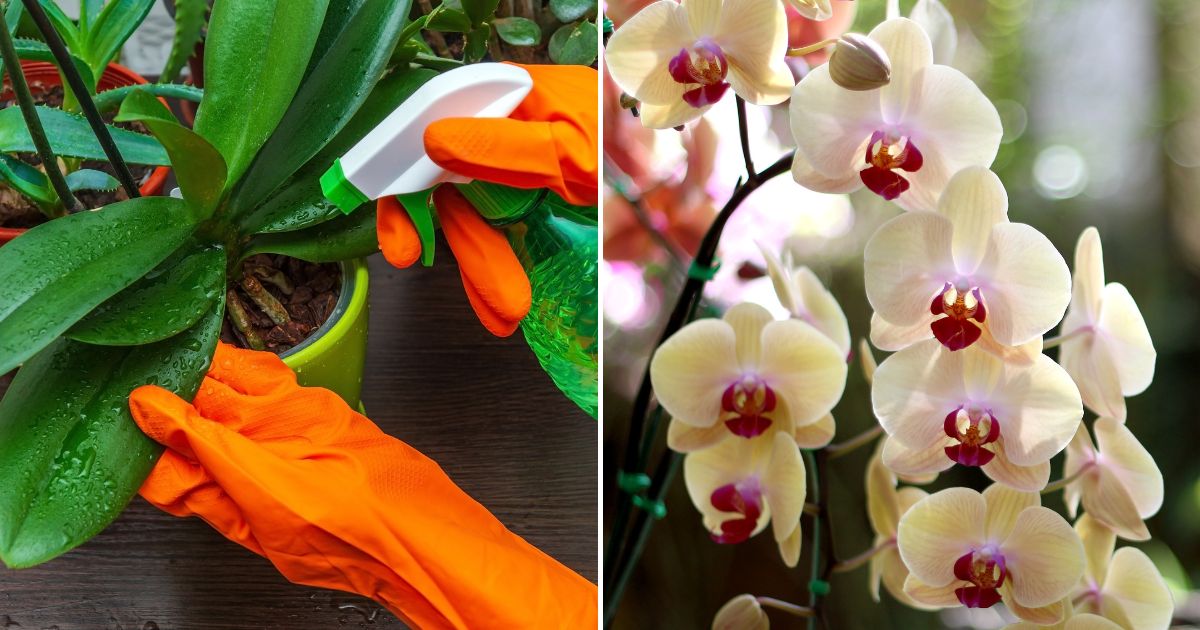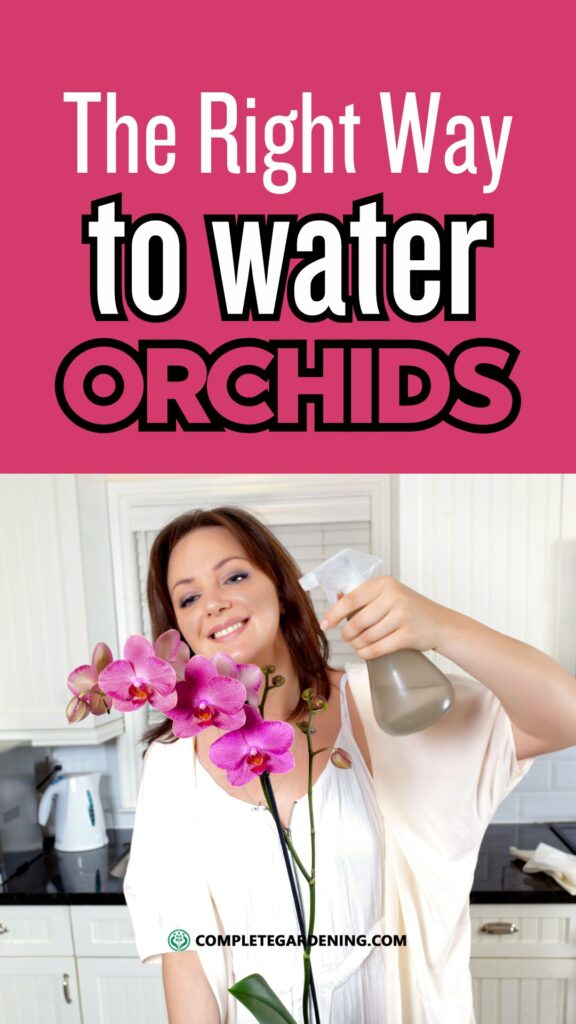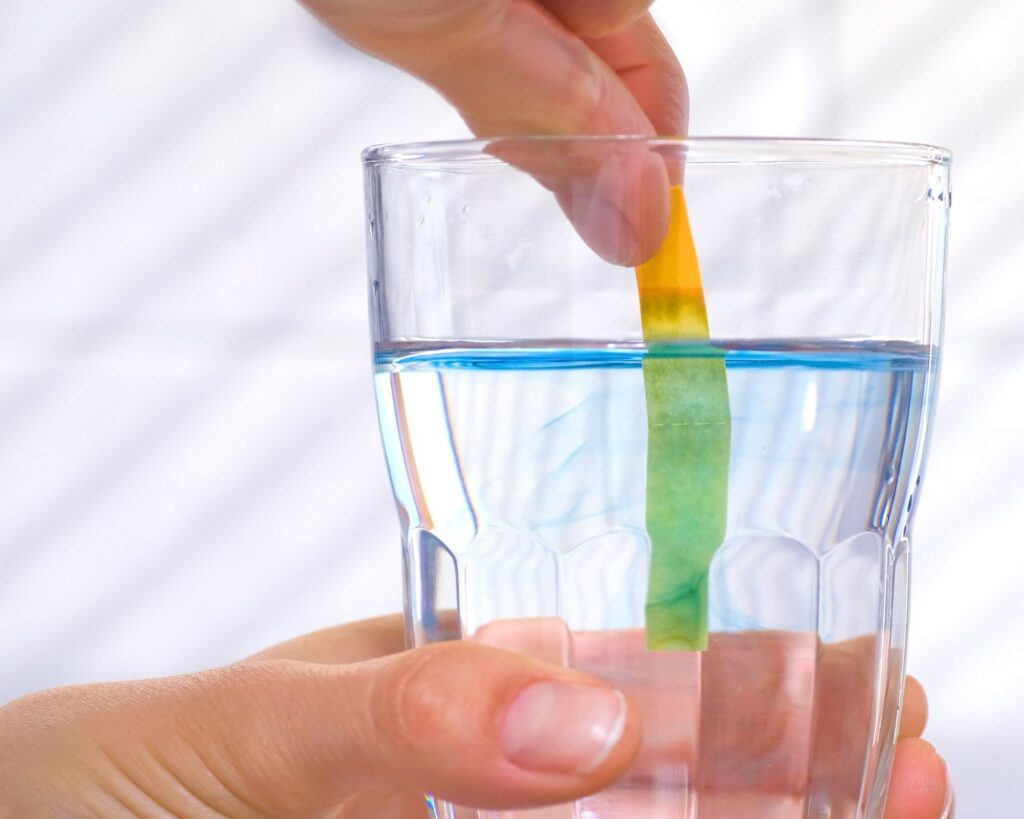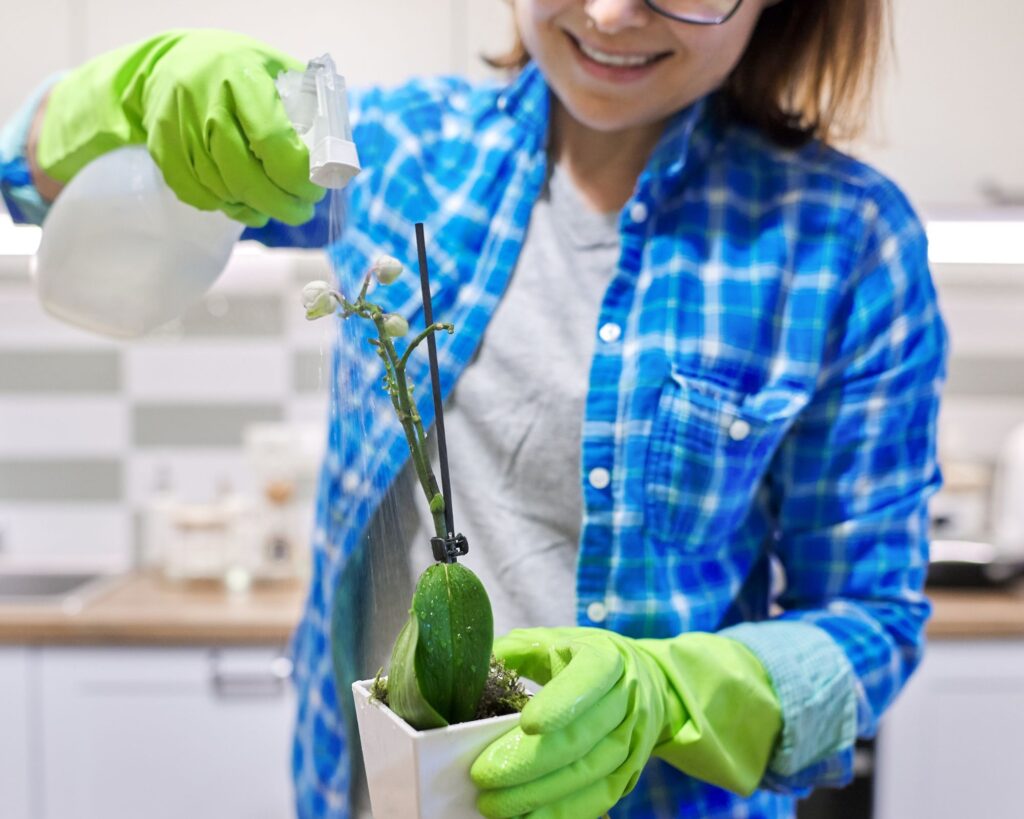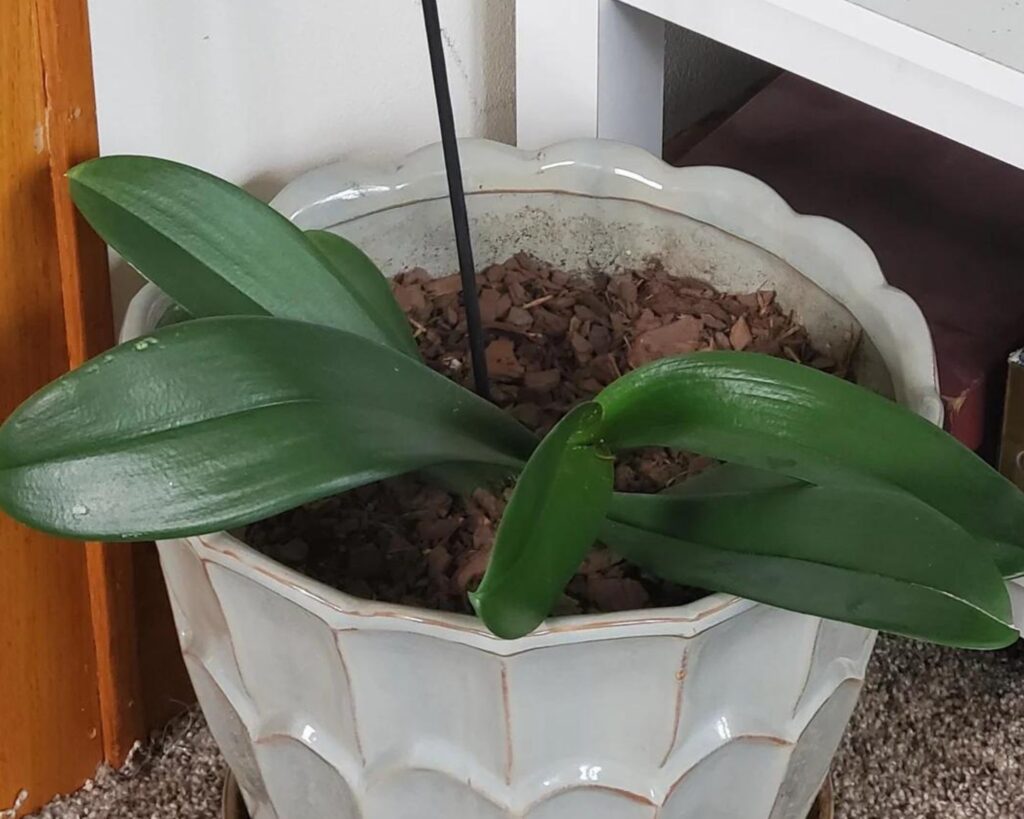Ever wondered why your orchids aren’t flourishing? The secret lies in how you water them. You’re in the perfect place to learn the best method to water orchids—soak them thoroughly and then let their roots dry out completely. This approach mimics their natural environment, preventing root rot and ensuring they get the hydration they crave.
Unlike your other houseplants, orchids have special needs. A gentle approach will keep your orchid happy and healthy. Remember, the key is to not overwater; orchids handle dryness better than excess moisture.
Follow these expert tips, and you’ll see your orchids thriving and blooming beautifully. With the right watering technique, you can enjoy their stunning flowers year-round. Continue reading to uncover detailed steps and best practices for top-notch orchid care.
Understanding Orchid Watering Needs
Orchids are sensitive to water quality, amount, and timing.
- Water Quality: Use filtered or distilled water. Avoid hard water, as the minerals can harm your orchid.
- Frequency: Water your orchid once a week. Over-watering can lead to root rot.
Different orchid species may have slightly different needs.
Phalaenopsis orchids, for example, prefer to dry out between waterings. Check the potting media with your finger to see if it’s dry before watering again.
It’s best to water orchids in the morning. This allows the plants to dry out during the day, reducing the risk of fungal infections. Orchids need humidity but avoid misting, as it can lead to rot.
Signs Your Orchid Needs Water
- Wilting leaves
- Dry potting media
- Brown, dry roots
Mistakes happen.
If you accidentally over-water, let the orchid dry out completely before the next watering. Your plant will appreciate your careful attention. Maintain a balance and pay attention to your orchid’s signs.
Tools and Supplies
When watering orchids, the right tools and supplies can make a significant difference. You’ll need the proper type of water and suitable containers to ensure your orchids receive the best care.
Choosing the Right Water
It’s essential to use pure, clean water for watering orchids. Tap water can be fine, but you should check for high chlorine or fluoride levels, which can harm orchids. If possible, opt for filtered or distilled water to avoid chemicals and impurities.
Rainwater is often ideal, as it is naturally soft and free of many contaminants found in tap water. To collect rainwater, you can use a rain barrel or similar collection system. Maintaining the pH balance is crucial, with an ideal range of 5.5 to 6.5.
Regularly test your water source with a pH meter or test strips to ensure it stays within this range. This attention to detail helps your orchids thrive and remain healthy.
Watering Containers and Aids
The container you use to water your orchids plays a big role in effectively hydrating them. Use watering cans with a long spout for precise application, avoiding leaves and flowers. This reduces the risk of rot and disease.
Misting bottles are helpful for maintaining humidity, especially in dry environments. Use distilled water in the mist bottle to prevent mineral buildup on leaves.
Self-watering pots are another convenient option. They regulate the moisture levels, ensuring your orchid roots receive consistent hydration. Consider placing orchids on humidity trays filled with pebbles and water to create a humid microenvironment.
The Watering Process
Watering orchids properly is crucial for their health and growth. You’ll learn when to water your orchids and the best methods to do so: soaking and using ice cubes.
Determining When to Water
Orchids need less water than many other plants. The key is to let the potting medium dry out between waterings. Stick your finger into the medium up to the second knuckle. If it feels dry, it’s time to water. Alternatively, the weight of the pot can indicate moisture levels; a light pot usually means it’s time to water.
The Soaking Method
This method mimics the orchid’s natural watering cycle. Place the orchid pot in a sink or bowl and let the water run through the medium for about 15 minutes. Use room temperature water. Ensure the pot has drainage holes so excess water can escape. After soaking, let the plant drain completely before returning it to its spot.
The Ice Cube Method
This method is convenient and prevents overwatering. Place one to three ice cubes on top of the potting medium once a week. If the orchid is in a larger pot, use more ice cubes, but typically, one is sufficient for a small pot. The ice melts slowly, giving the orchid consistent moisture without drenching its roots.
Post-Watering Care
Proper post-watering care is essential for orchid health. Focus on excellent drainage and keep an eye on humidity levels for the best results.
Drainage Best Practices
After watering, ensure excess water drains out completely. Orchids dislike sitting in water. Tips include:
- Use pots with drainage holes.
- Elevate pots using dishes or mesh pads.
- Choose well-draining potting mixes like bark or sphagnum moss.
Examine the orchid’s roots. They should appear plump and green, not soggy. Remove any standing water from trays or decorative containers to prevent root rot.
Monitoring and Adjusting Humidity
Humidity plays a critical role in orchid health. Aim for 40-60% humidity. Methods to manage humidity:
- Use a humidity tray with pebbles.
- Group plants together.
- Utilize a humidifier in dry environments.
Regularly check humidity with a hygrometer. Mist your orchids if necessary, but avoid leaving water droplets on the leaves for prolonged periods to prevent fungal issues.
Common Mistakes to Avoid
Overwatering: Orchids are especially sensitive to overwatering. This common mistake can lead to root rot. Instead, water your orchid thoroughly but infrequently.
Using Tap Water: Tap water often contains chemicals that can harm your orchids. It’s best to use distilled water or rainwater to keep them healthy.
Not Allowing Soil to Dry Out: Orchids need their growing medium to dry out between waterings. Keeping the medium constantly wet can lead to fungal issues. Check the soil moisture before adding water.
Ignoring Humidity Levels: Orchids thrive in humid environments. Failing to maintain appropriate humidity can stress your plant. Aim for a humidity level between 40% and 60%.
Incorrect Pot Size: Using the wrong pot size can affect your orchid’s growth. Orchids prefer smaller pots that fit their root system snugly. A pot that’s too large can hold excess water, leading to problems.
Poor Air Circulation: Stagnant air can cause problems like mold growth. Ensure your orchids have good air circulation to prevent this.
Not Feeding Properly: Orchids need specific fertilizers. Using the wrong type or amount of fertilizer can harm your plant. Opt for a balanced, orchid-specific fertilizer and follow the recommended feeding schedule.
Placing in Direct Sunlight: Orchids can get sunburned if they’re exposed to direct sunlight for too long. Place them in bright, indirect light to keep them safe.
By avoiding these common mistakes, you’ll be well on your way to cultivating thriving orchids!
Successfully caring for orchids, particularly when it comes to watering, can make the difference between a struggling plant and one that thrives with vibrant blooms.
Embrace these practices, and watch as your orchids transform into the beautiful, thriving plants you’ve always desired. Your journey to perfect orchid care starts now—happy growing!
